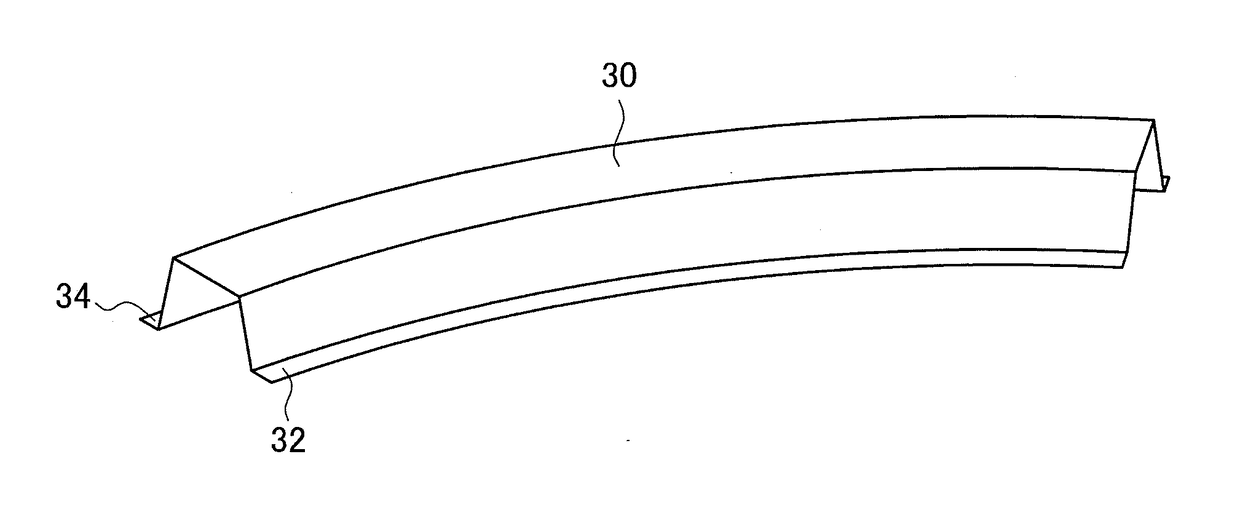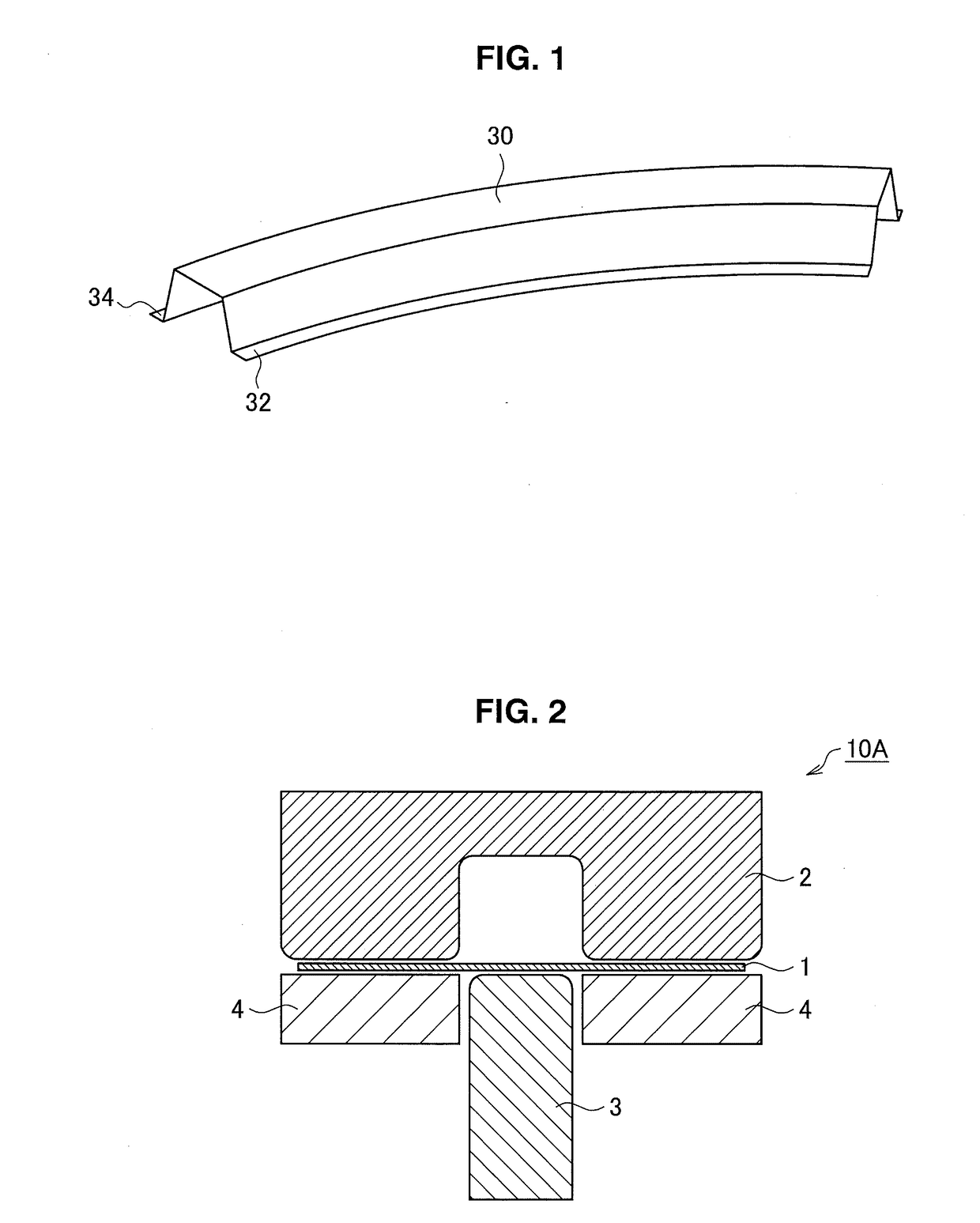Model setting method, forming simulation method, production method of forming tool, program, computer-readable recording medium having program recorded thereon, and finite element model
- Summary
- Abstract
- Description
- Claims
- Application Information
AI Technical Summary
Benefits of technology
Problems solved by technology
Method used
Image
Examples
working example 1
[0106]As working example 1, the finite element model of the press forming die is created by setting the surface layer as the elastic body shell element, and the base body as the rigid body shell element. The finite element model of the working example 1 is illustrated in FIG. 13. In the working example 1, the finite element model of the press forming die is built by setting the surface layer 12a of the die model 12, the surface layer 13a of the punch model 13, and the surface layer 14a of the blank holder model 14 as the shell elements of the elastic bodies, and the base body 12b of the die model 12, the base body 13b of the punch model 13, and the base body 14b of the blank holder model 14 as the shell elements of the rigid bodies, and the metal plate model 11 as the shell element of the elasto-plastic body, as illustrated in FIG. 13. In this finite element model, the thicknesses of the surface layers are set to 2 mm, and the shell elements are located at the centers of the thickne...
working example 2
[0107]As working example 2, the finite element model of the press forming die is created by setting the surface layer as the elastic body thick-walled shell element, and the base body as the rigid body shell element. The finite element model of the working example 2 is illustrated in FIG. 14. In the working example 2, the finite element model of the press forming die is built by setting the surface layer 12a of the die model 12, the surface layer 13a of the punch model 13, and the surface layer 14a of the blank holder model 14 as the thick-walled shell elements of the elastic bodies, and the base body 12b of the die model 12, the base body 13b of the punch model 13, and the base body 14b of the blank holder model 14 as the shell elements of the rigid bodies, and the metal plate model 11 as the shell element of the elasto-plastic body, as illustrated in FIG. 14. Note that, in FIG. 14, the base body 14b of the blank holder model 14 is hidden by the surface layer 14a and is not depicte...
working example 3
[0108]As the working example 3, the finite element model of the press forming die is created by setting the surface layer as the elastic body solid element divided once in the thickness direction, and the base body as the rigid body shell element. The finite element model of the working example 3 is the same on display as the finite element model of the die of the working example 2 illustrated in FIG. 14. In the working example 3, the finite element model of the press forming die is built by setting the surface layer 12a of the die model 12, the surface layer 13a of the punch model 13, and the surface layer 14a of the blank holder model 14 as the solid elements of the elastic bodies, and the base body 12b of the die model 12, the base body 13b of the punch model 13, and the base body 14b of the blank holder model 14 as the shell elements of the rigid bodies, and the metal plate model 11 as the shell element of the elasto-plastic body. In this finite element model, the thickness of t...
PUM
| Property | Measurement | Unit |
|---|---|---|
| Thickness | aaaaa | aaaaa |
| Thickness | aaaaa | aaaaa |
| Plasticity | aaaaa | aaaaa |
Abstract
Description
Claims
Application Information
 Login to View More
Login to View More - R&D
- Intellectual Property
- Life Sciences
- Materials
- Tech Scout
- Unparalleled Data Quality
- Higher Quality Content
- 60% Fewer Hallucinations
Browse by: Latest US Patents, China's latest patents, Technical Efficacy Thesaurus, Application Domain, Technology Topic, Popular Technical Reports.
© 2025 PatSnap. All rights reserved.Legal|Privacy policy|Modern Slavery Act Transparency Statement|Sitemap|About US| Contact US: help@patsnap.com



